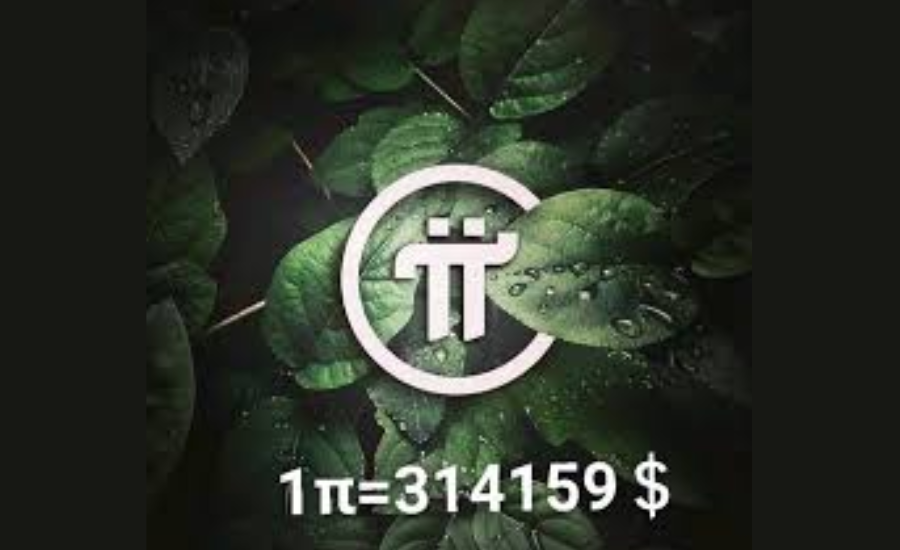In recent weeks, discussions and debates have emerged across various social media platforms concerning the speculated official price of Pi 314,159 U for Pi Network.
Many participants within the Pi community are optimistic, believing that these price speculations, often masked under the guise of ‘consensus,’ will become a reality. However, this optimism may overlook critical factors that could suggest otherwise, potentially due to a lack of understanding of the fundamental principles of blockchain technology and the cryptocurrency sector.
During an extensive dialogue on the Pi College forum, a prominent member named Alexander Pym expressed that the value of Pi should correlate with the goods and services it provides. Pi College comprises dedicated and enthusiastic Pi miners committed to fostering comprehensive education about the Pi Project.
He stated, “Let’s clarify this point. I have no opposition to any consensus, but we must acknowledge certain principles that cannot be overlooked; ignoring them may lead to significant repercussions, particularly regarding economic fundamentals. It’s essential to recognize that Pi’s value should reflect the estimated goods and services that are available.”
Pym further advised, “If you’re advocating a specific value, ensure that you have tangible offerings to substantiate it. Additionally, keep in mind that as consensus grows, the need for corresponding goods and services increases.”
In light of the ongoing debates regarding the projected value of Pi, community leader Admin Nedu highlighted that the official whitepaper emphasizes that the value of Pi will be determined by the activities and services rendered by its pioneers.
The advocacy for a Pi314,159 U valuation for a single Pi reflects a misunderstanding of the fundamentals of cryptocurrency mechanics and tokenomics. These elements are crucial in driving Pi’s value. This is the reality we face as Pi aims for an open mainnet, he remarked.
The Appeal of the Pi314,159 U: An In-Depth Look

To begin, it is essential to explore the factors that contribute to the allure of the Pi314,159 U. My comprehensive research, informed by insights gathered from platforms like Hockanews and Twitter, provides a solid framework for assessing the potential viability of this value. An important aspect to consider is the global context of the Pi314,159 U. Over the past year, the Chinese community has demonstrated significant engagement with this value, resulting in a notable rate of adoption.
Particularly noteworthy are the offline bartering practices in China, where GCV is held in high regard. Current estimates suggest that the total value of transactions involving GCV has surpassed $100 million USD. These figures are derived from reputable sources within prominent communities across several Chinese provinces, including Hebei, Fujian, Guangdong, Sichuan, and Anhui, as well as insights from nearly 300 Pioneer Pi clubs.
Consequently, it becomes evident that the Pi314,159 U is not just a theoretical figure; it embodies tangible transactions and reflects the investments of numerous traders who have committed their resources and inventories. This underscores the importance of understanding the practical implications of the Pi314,159 U and its potential to foster a thriving economy within the Pi Network ecosystem.
The Significance of the Pi314,159 U Requirement
Understanding the necessity of the Pi314,159 General Currency Value (GCV) is crucial for grasping its role within the Pi Network. Additionally, it’s vital for traders to consider the most effective strategies for engaging with this value. Some individuals suggest that bartering could be a savvy method for amassing significant amounts of Pi at minimal costs, perhaps as low as $1, $10, or $100. While this approach may seem ingenious and within the bounds of Pi Network’s guidelines, it’s essential to recognize that the Pi Network has not yet achieved full operational status and remains unavailable on major exchange markets. This indicates a steadfast commitment to their overarching mission.
To ensure a successful launch of the mainnet, Pi needed to establish its initial price at a sufficiently high and stable level. This strategy is designed to deter pioneers from engaging in mass sell-offs as the mainnet opens. The volume of Pi held by pioneers during the crucial three-year lock-in period is pivotal for the growth and sustainability of the Pi ecosystem. Furthermore, as Pi aspires to become a super-sovereign currency capable of functioning as a global settlement medium, its value must rise significantly. Such an increase is necessary to support extensive international trade and facilitate seamless transactions across borders.
The Importance of a Cohesive Pricing Framework
The third aspect to examine is the necessity of a cohesive pricing framework. Analyzing historical examples, particularly from the Qin Dynasty in China, reveals the importance of unifying various currencies. This historical context provides valuable insights into the significance and consequences of currency consolidation.
During the reign of Qin Shihuang, the implementation of a standardized currency played a crucial role in alleviating the chaos that stemmed from the myriad of differing currencies that characterized the Spring and Autumn and Warring States periods. The introduction of a unified currency not only simplified the complexities associated with currency conversion but also removed the obstacles that hindered the exchange of goods and services. This strategic move significantly bolstered economic growth and social cohesion.
Drawing from this historical perspective, it becomes evident that a stable and unified currency with consistent pricing is vital for fostering economic development. The growth and sustainability of the Pi Network ecosystem heavily rely on establishing a standardized pricing model. Price fluctuations can create uncertainty, potentially stifling progress and deterring participation. Therefore, implementing a cohesive pricing structure is essential to ensure the ongoing success of the Pi Network and its ability to facilitate seamless transactions.
The Process of Price Harmonization
How can traders effectively synchronize prices with the General Currency Value (GCV)? I suggest that merchants begin by offering lower-priced items to gather more data on blockchain transactions. This strategy enables us to assess potential impacts and mitigate investment risks. Introducing high-value products right away may not be advisable; instead, it could be more advantageous to communicate our plans to launch such items once pioneers have successfully established consistent price ranges. This approach can accelerate the adoption of our ecosystem.
It’s essential to emphasize that we do not impose or enforce GCV pricing; rather, traders are encouraged to move forward at a pace that feels comfortable for them. By allowing flexibility in how they engage with the pricing system, we can foster a more organic and sustainable growth of the market. This gradual approach will also help build confidence among participants, leading to a more robust and interconnected trading environment.
Essential Insights to Consider
Number of Pi Holders
Pi Network has achieved a remarkable milestone in the cryptocurrency landscape, boasting a significantly higher number of holders compared to many other digital currencies. This expansive user base indicates strong community engagement and interest, setting Pi apart as a noteworthy player in the crypto market. The high number of holders reflects both the potential for growth and the collective belief in the future utility of Pi, creating a robust ecosystem of users who are actively involved in its development.
Utility of Pi
Unlike traditional cryptocurrencies that undergo Initial Coin Offerings (ICOs), Pi Network has not yet fully realized its utility potential. Currently, the utility for Pi is less than 1%, but there is anticipation surrounding the release of the Software Development Kit (SDK) for utility app deployment. This SDK will empower developers to create applications that leverage Pi’s blockchain technology. It’s important to understand that on exchanges like Binance, coins can be listed through different methods, including DYR (Dynamic Yield Rate), which encompasses both ICOs and utility offerings. Pi is positioned to enter this latter category, and as its utility expands, the value proposition for holders is expected to increase.
Rapid Transaction Confirmation
Pi Network benefits from the Security Consensus Protocol (SCP), allowing transactions to be recorded almost instantly—typically within three seconds. This rapid transaction processing enhances user experience by eliminating delays, ensuring that payments are confirmed without keeping buyers waiting. In contrast, Bitcoin transactions can sometimes take up to 30 minutes for confirmation, especially during peak network congestion, which can be frustrating for users seeking quick and efficient transactions.
Equitable Distribution of Pi:
The distribution of Pi stands in stark contrast to Bitcoin, where a significant portion of the total supply is concentrated in a small number of wallets, often referred to as “whales.” This concentration can lead to price manipulation and volatility. In contrast, Pi Network employs a mining mechanism that encourages equitable distribution among its users, ensuring that everyone participating in the mining process receives a share of Pi. This fair distribution model fosters a more stable and supportive environment for the token’s value, as it reduces the risk of manipulation by a few large holders.
Key Insights to Consider

Circulating Supply
The circulating supply of any cryptocurrency plays a crucial role in determining its market value. I, Nedu, often find it amusing when individuals claim that even a circulating supply of 500 billion Pi coins won’t influence its price. In reality, the amount of a coin in circulation—regardless of whether it was introduced via an ICO or through utility offerings—significantly impacts its valuation. However, the Core Team (CT) is aware of this and has implemented strategies to mitigate these effects. A substantial portion of the mined Pi is held by pioneers who have chosen to lock it up, effectively contributing to the scarcity of the token. This intentional reduction in available supply can help support its value over time.
Importance of Exchange Listings
It is essential for Pi Network to be listed on exchanges, regardless of the preferences of the pioneers. Gaining trust and confidence from investors necessitates that Pi becomes accessible on various trading platforms. This will involve a portion of the supply being managed through both custodial and non-custodial exchanges. Failure to secure these listings could result in significant legal challenges for the Core Team, particularly from regulatory bodies like the SEC in the United States, which could pursue actions for potential money laundering or other financial misconduct. A relevant case study is XRP, which faced serious repercussions due to regulatory scrutiny. For a currency to function effectively, it must be able to be exchanged for other forms of money; thus, Pi needs to establish its presence in the stock market and compete alongside other cryptocurrencies.
Realistic Expectations for Pi’s Value
Not here to spread negativity, as I too have a vested interest in the success of Pi. However, I urge everyone to set aside thoughts of a $314,159 valuation for Pi at this moment. Such expectations can create unhealthy speculation. Instead, the focus should be on developing utilities for Pi that will genuinely enhance its value and utility in the market. By fostering practical applications, we can pave the way for Pi to progress in a sustainable and positive direction.
Concerns Over Pi’s Valuation
Amid the ongoing discussions about Pi’s official value, a miner on Twitter with the handle @EzeFreemanU highlighted the risks associated with KYC-verified pioneers who might be unknowingly selling their goods in exchange for Pi at unregulated prices. He cautioned that those trading Pi at the speculative $314,000 valuation could face significant repercussions. His message was clear: “Anyone selling Pi at $314k is undermining the project. Those accepting this inflated value should prepare for a substantial loss. We must protect the integrity of this project; unchecked greed can lead to disastrous consequences. It’s unreasonable to assign a value so arbitrarily.”
Conclusion
The ongoing discussions regarding the speculative $314,159 valuation for Pi reveal both excitement and misconceptions within the Pi community. Experts, including prominent figures like Alexander Pym, stress that Pi’s value must align with the goods and services it provides, especially as the network approaches its mainnet launch, where establishing a stable initial price is critical to prevent mass sell-offs. Historical lessons from currency unification during the Qin Dynasty highlight the importance of a cohesive pricing framework for economic stability, which is essential for the Pi Network’s success. By promoting strategies such as bartering, price synchronization, and enhancing utility through the upcoming SDK, the Pi community can cultivate an informed environment that supports sustainable growth, aligning the aspirations of its pioneers with realistic economic principles.
Frequently Asked Questions (FAQs)
Q: What is the significance of the $314,159 valuation for Pi?
A: The $314,159 valuation for Pi represents a speculative price point that has emerged within the Pi community. While some view it as an aspirational target, it’s crucial to understand that the actual value of Pi will depend on the availability of goods and services within the ecosystem. As such, this figure should not be seen as definitive.
Q: How does the General Currency Value (GCV) impact Pi transactions?
A: The GCV serves as a benchmark for pricing goods and services within the Pi Network. It is intended to unify pricing, fostering stability and encouraging participation among traders. The establishment of a cohesive GCV is essential for the growth and sustainability of the Pi ecosystem.
Q: What role does bartering play in the Pi Network?
A: Bartering can be a viable strategy for accumulating Pi at low costs. By facilitating exchanges of goods and services without relying heavily on monetary transactions, the Pi community can potentially increase Pi’s circulation. However, participants should proceed cautiously, ensuring that their trades align with Pi Network guidelines.
Q: Why is a stable price important for Pi’s success?
A: A stable price is vital for preventing mass sell-offs and ensuring confidence in the Pi Network. By establishing a consistent pricing model, the network can create a solid foundation for economic growth and encourage greater participation from users.
Q: How can Pi’s utility be enhanced?
A: The utility of Pi is expected to grow significantly with the upcoming release of a Software Development Kit (SDK) for app development. This will enable developers to create applications that leverage Pi’s blockchain technology, increasing its practical use in everyday transactions and potentially enhancing its value.
Read Next: $253.08/4



